Your Most Frequently Asked Thanksgiving Questions, Answered
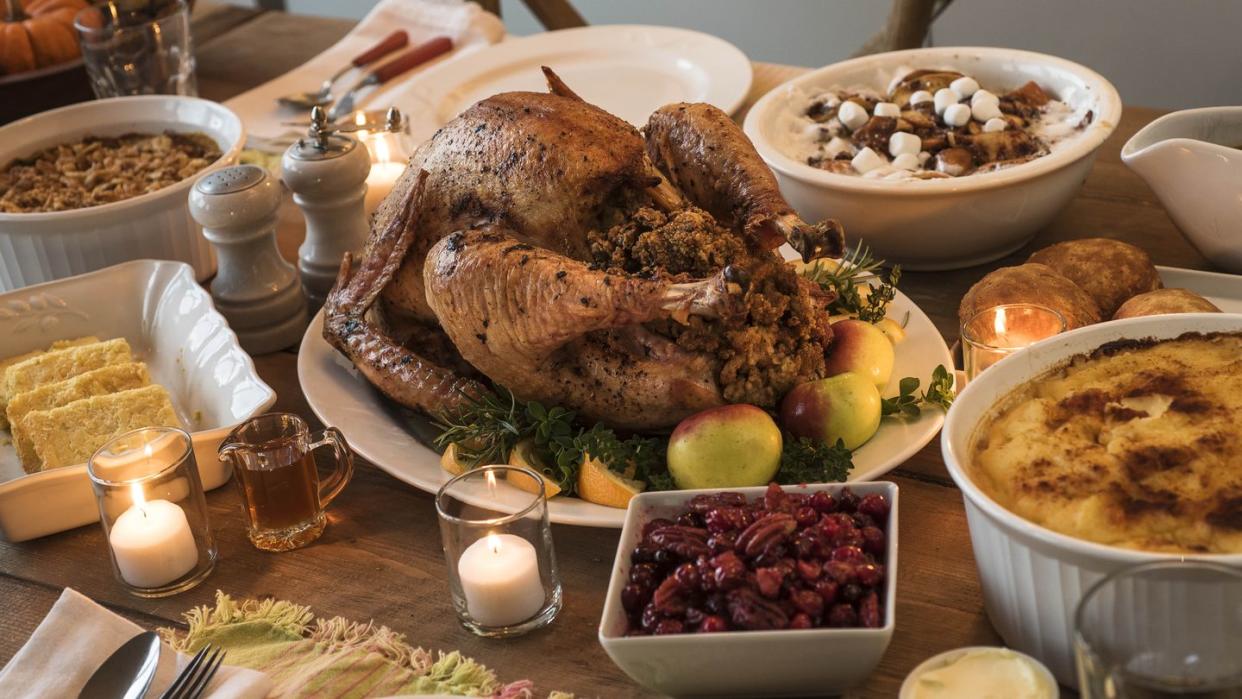
The Thanksgiving holidays are right around the corner. As you and your friends, family, and other guests start prepping for the festivities, we bet everyone has some looming questions in mind. Rather than Googling for hours, coming to the table dazed and confused, or worse, not having a plan of action for those burning cooking inquiries, we've got you covered with all the answers you could possibly want to the most frequently asked Thanksgiving questions.
Our friends over at Delish hooked us up with valuable expert insight you can learn a lot from. From a guide to picking the right potatoes for mashed potatoes to the story behind the wishbone tradition and even how much turkey you should be serving per person, scroll on and study up. We guarantee that once you do Thanksgiving this year will never be the same!
Do you need to refrigerate pecan pie?
You may not realize it, but pecan pie filling actually contains eggs. The USDA recommends all pies rich in eggs and custard to be refrigerated after they've cooled. This includes pumpkin pie, lemon meringue pie, banana cream pie, and, yes, pecan pie. If you bought your pie, it may contain preservatives, so be sure to check with the store or take a peak at the label for proper storage instructions.
For the full article, read it on Delish.
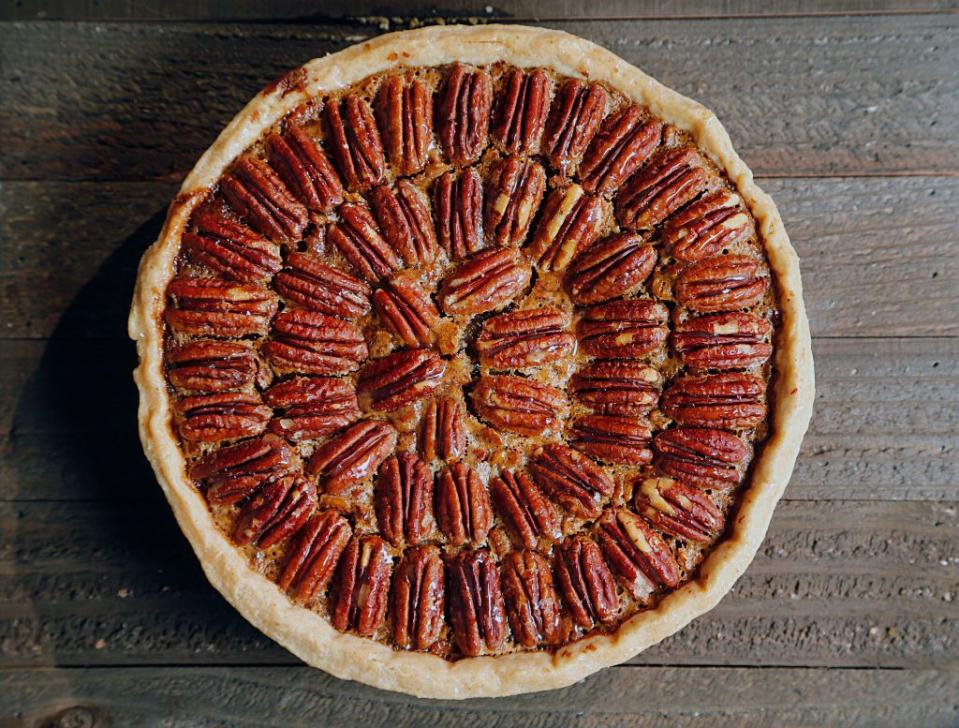
Can you freeze pumpkin pie?
Yup! You can freeze a pumpkin pie before or after baking it. If you’ve just finished making it or just dumped the filling into the pie crust, let it cool to room temperature before throwing it into the freezer. This helps to cut down on crystals that could form and make your pumpkin pie less tasty. We recommend using an aluminum pie pan so it freezes faster. A faster freeze means less crystals forming means the most delicious pumpkin pie from the freezer ever.
For the full article, read it on Delish.
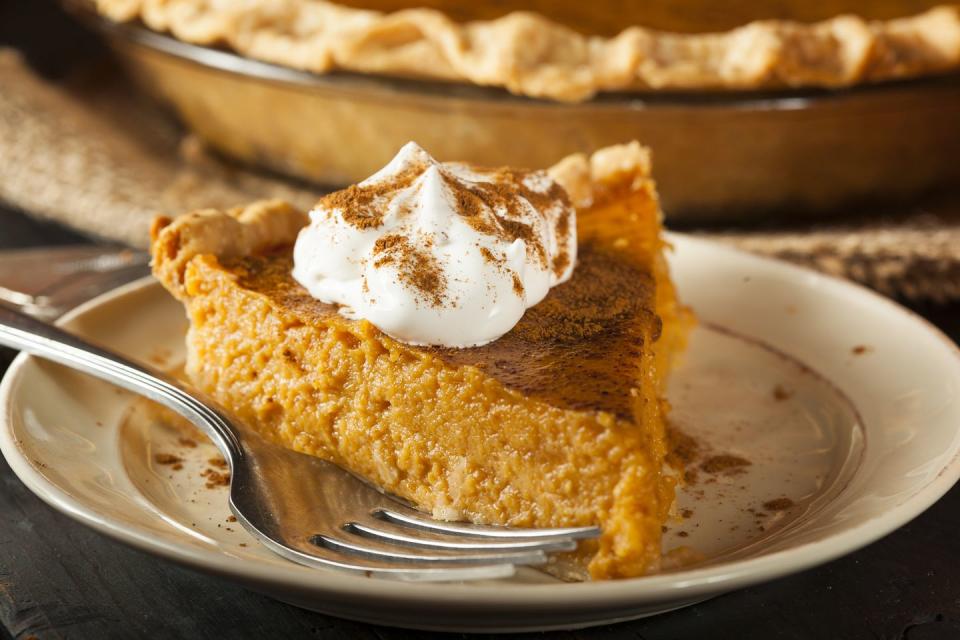
What are the best potatoes to use for mashed potatoes?
Russets are many home cooks' go-to spud when it comes to making mashed potatoes, and for good reason. They're typically the most cost-effective option. Russets also run fairly large, which means you can peel fewer potatoes than you would with smaller varieties.
The second-most-popular pick for mashed potatoes is Yukon Gold. And unlike the starchy russet, a Yukon Gold is considered a more waxy potato. What this means is that they have much more natural moisture and a relatively low starch content.
If russet potatoes are on one end of the starch spectrum, red potatoes are the polar opposite. These small, vibrant colored spuds are even waxier than Yukon Golds. They have an extremely firm texture that holds up even after being boiled. And since this variety leans on the smaller side, you'll need much more of them to make enough mash for a crowd. That also means that going through the effort to peel them is an unnecessarily arduous task.
For mashing purposes, you can reasonably expect to buy vibrant orange sweet potatoes. And those typically have a texture somewhere in between a russet and a Yukon Gold.
For the full article, read it on Delish.
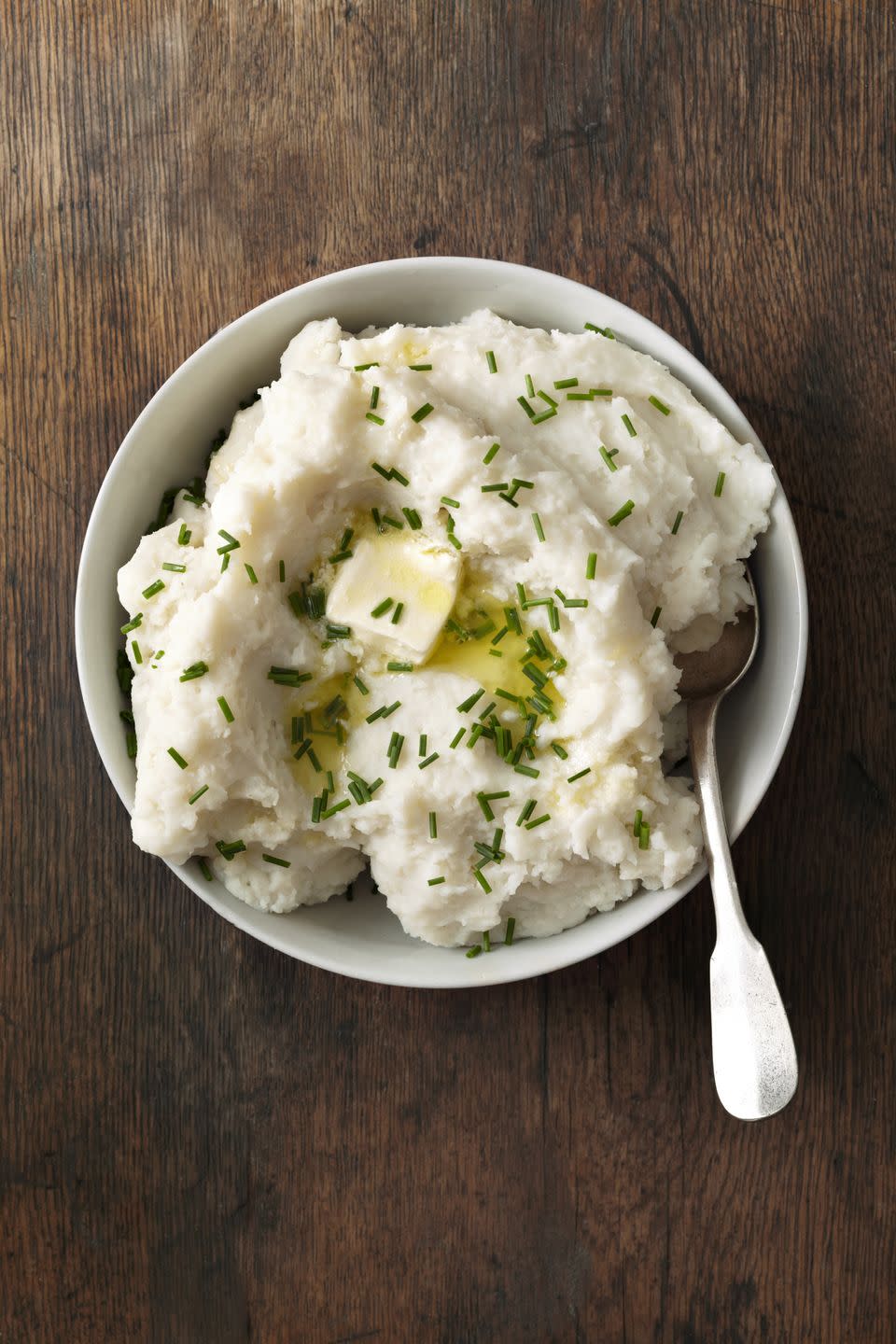
Can you eat sprouted potatoes?
The short answer is: it depends. The sprouts themselves are high in glycoalkaloids, a type of chemical compound that can be toxic to humans. Glycoalkaloids are also found in fresh potatoes, albeit in negligible amounts. The more the potatoes sprout, the more glycoalkaloids develop—in both the sprouts and the root itself.
High concentrations of these compounds lend an unpleasantly bitter flavor to your potato and can cause serious stomach problems. According to the National Capital Poison Center, consuming enough glycoalkaloids can lead to vomiting, abdominal pain, diarrhea, headaches, fever, and even death (in a few cases).
But a few small sprouts aren't necessarily enough to send you to the emergency room.
For the full article, read it on Delish.
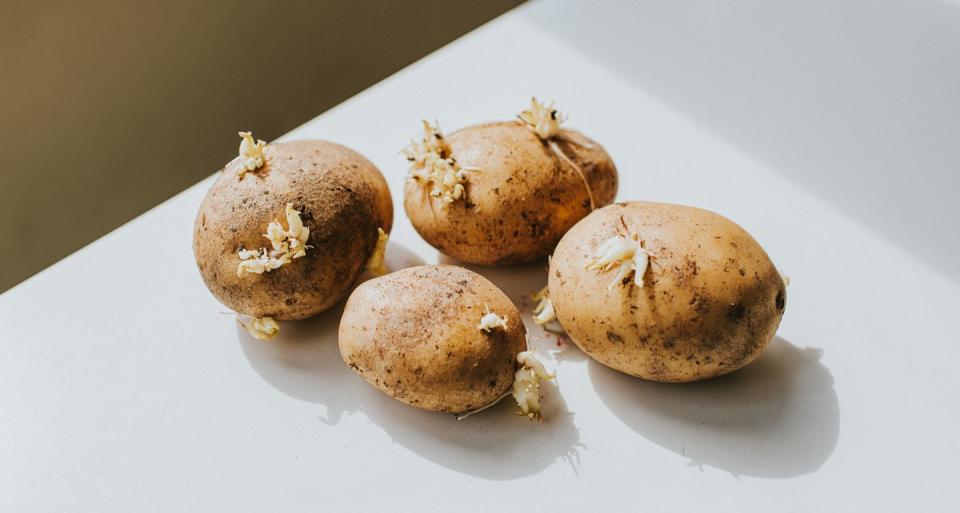
What's the difference between sweet potatoes and yams?
Beyond the visual differences, yams and sweet potatoes have distinctive flavor profiles. "Yams are less sweet than sweet potatoes," food scientist and blogger Jessica Gavin said. "They have a more earthy, neutral profile. You'll notice that sweet potatoes will have a softer texture that can feel mushy, whereas yams are drier and starchy like russets."
Scientifically, sweet potatoes and yams have a lot of differences also. "They are not related or even in the same plant family," Harvey said. "Sweet potatoes are considered storage roots and are grown from plant vine cuttings called slips. Yams are considered tubers and are grown from pieces of the tubers."
For the full article, read it on Delish.
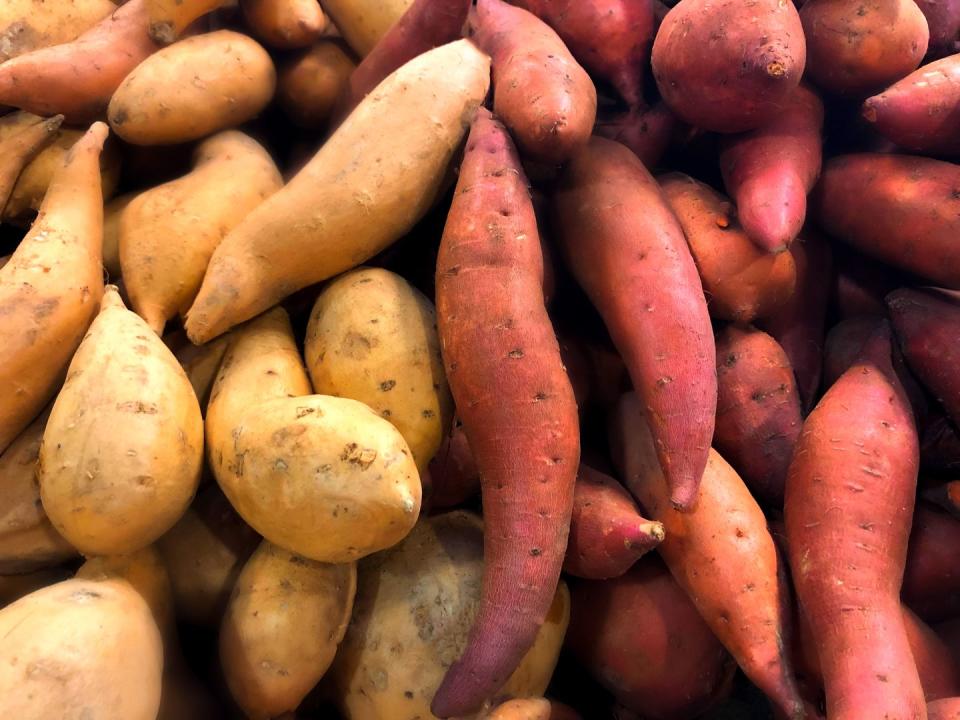
Why you should never use stale bread for your stuffing?
A perfect stuffing should achieve a delicate balance between moisture and texture. Too dry, and your stuffing will be crumbly and bland. While too much liquid will leave you with a soggy, unappetizing dish.
"If you’re using stale bread and adding liquid, there will be nowhere for the liquid to go," according to Delish Food Director Rob Seixas. "It's like when you're trying to cram more people into a fully booked flight. There's no space for extra moisture to fill."
For the full article, read it on Delish.
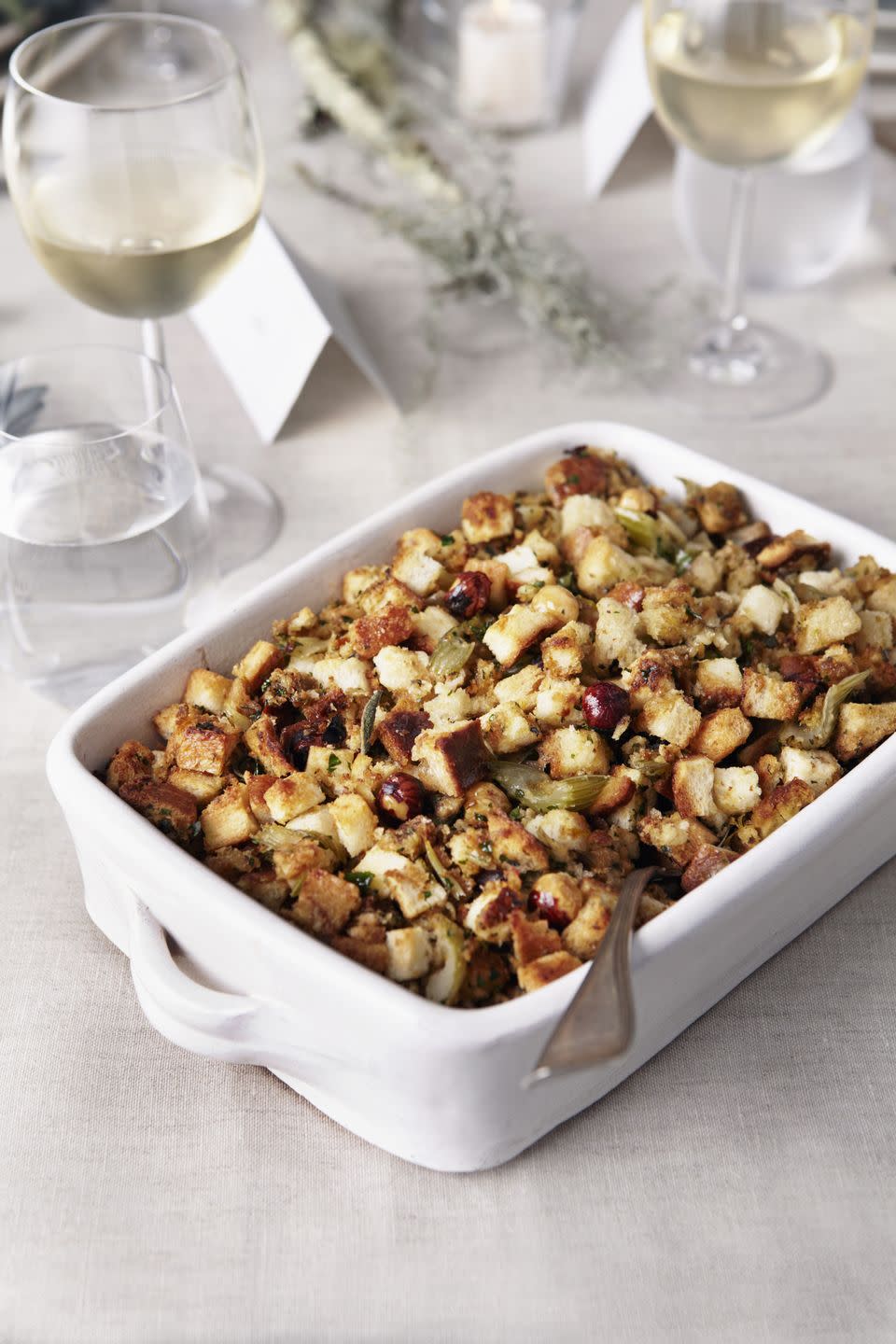
How should you reheat your turkey?
Low and slow heat is the key here. You should preheat your oven to no higher than 325°F when using this method. It's not the fastest way to reach your warm turkey destination, but it is the gentlest. Depending on the size of your turkey pieces, this can take anywhere from 20 to 45 minutes.
Not everybody has the patience to preheat the oven and wait for their turkey to gradually warm through. And that's okay! If you're only heating up enough turkey for one or two people, you can have leftover-ready turkey in just a few minutes on the stovetop. And the methodology is strikingly similar to the oven technique.
For the full article, read it on Delish.
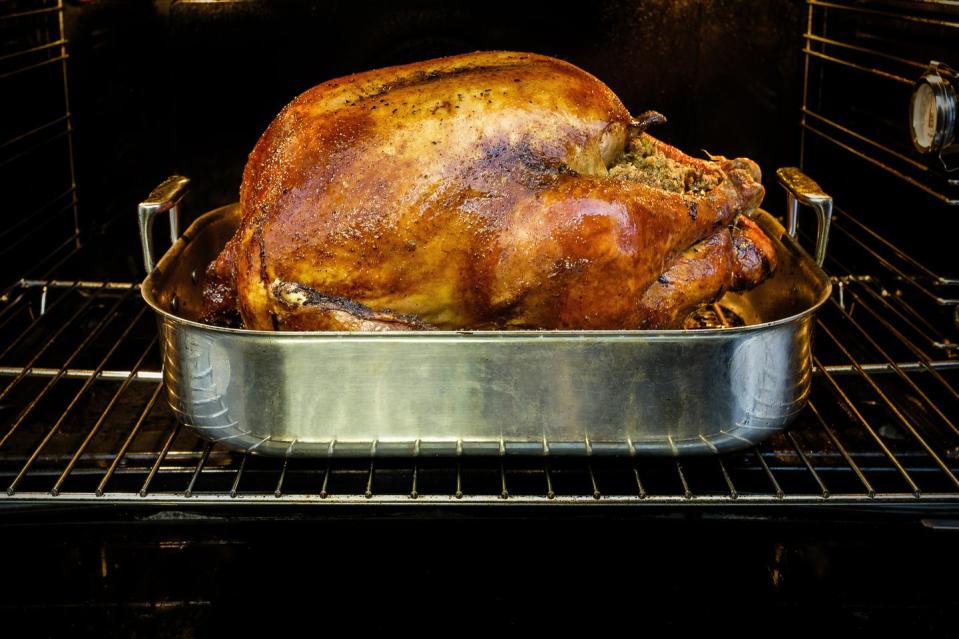
What's the deal with breaking the turkey's wishbone?
Breaking a turkey's wishbone at dinner may seem strange, but it's a tradition that has evolved over thousands of years. On Thanksgiving, many Americans remove the wishbone from the turkey, and two people pull at each end while making a wish. When it breaks, the person whose part has the centerpiece will have their wish come true.
For the full article, read it on Delish.
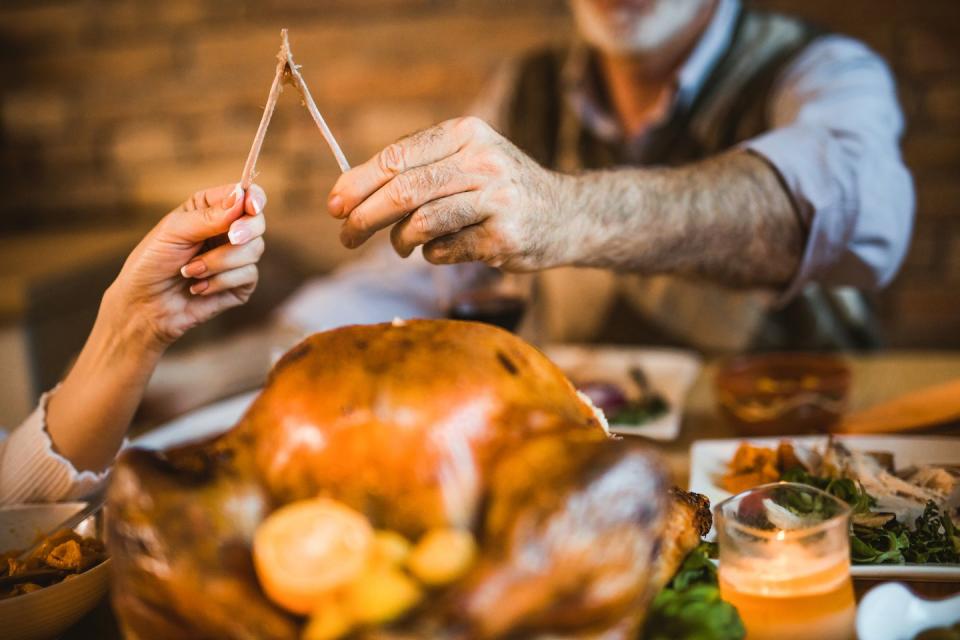
How much turkey do you need per person?
Here at Delish, we believe in hitting the sweet spot. While 1 pound per person could feel like too little, and 1 1/2 pounds for each guest might be over-doing it, 1 1/4 pounds of turkey per mouth is the perfect balance.
For the full article, read it on Delish.
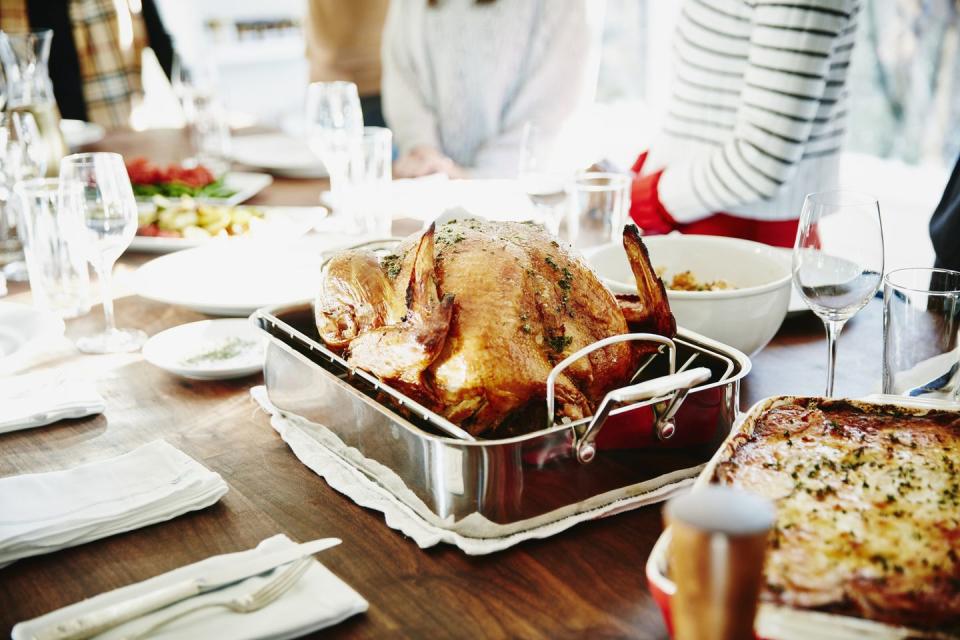
Does your family eat Thanksgiving dinner at the right time?
According to the experts, there isn't necessarily a right time to start digging in, but there's absolutely a wrong time. The consensus is that eating too close to when you'll go to bed Thanksgiving night has the potential to wreak havoc on your gastrointestinal system. Additionally, eating earlier in the day gives you more of a buffer between that oh-so-necessary second helping.
For the full article, read it on Delish.
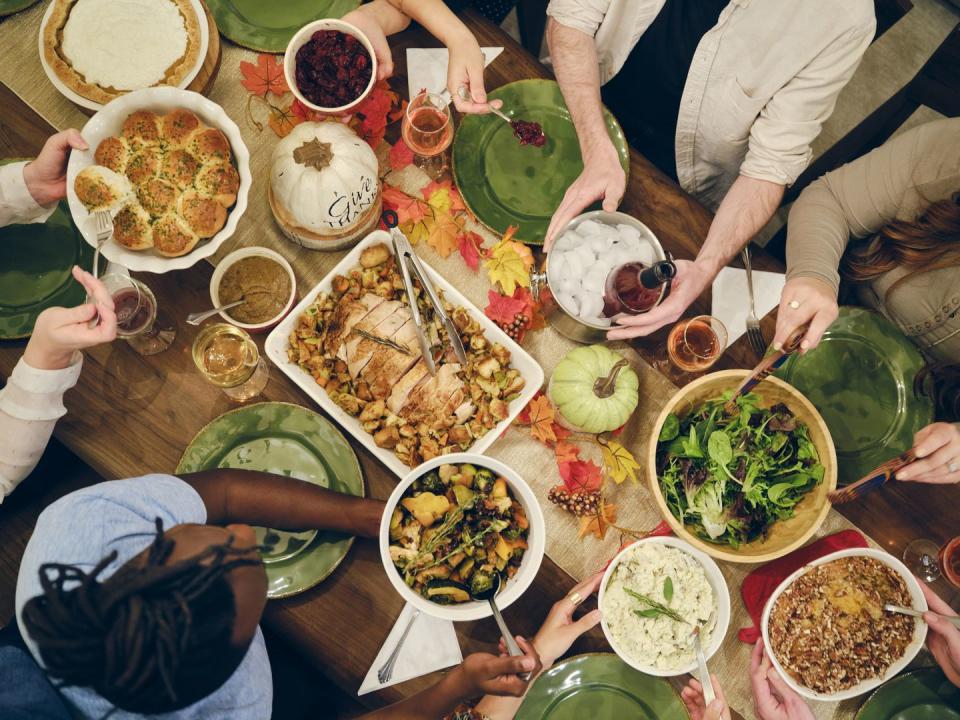
You Might Also Like


